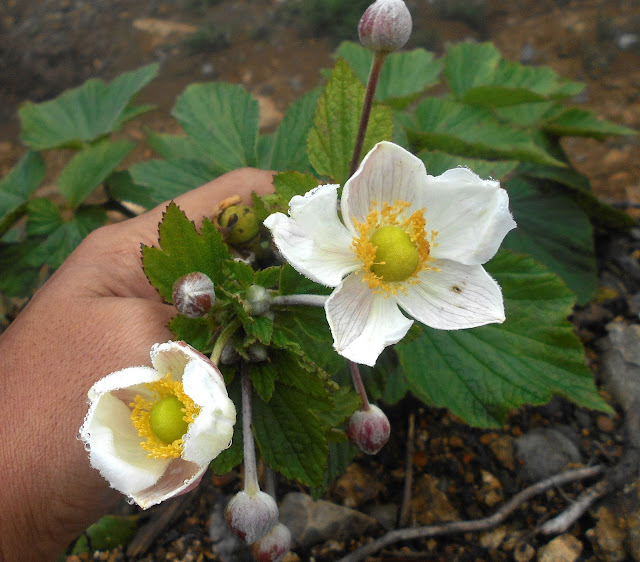The grape-leaved Anemone
Anemone vitifolia is a widespread species found from the Himalayas eastward to China, and southwards to Taiwan and Luzon, where it occurs in the central highlands. During a recent trip to Benguet, I found flowering examples of these plants along roadsides, mostly growing on disturbed sites such as roadcuts and eroded slopes. The plants are about a meter tall with leaves bearing similarities in outline to grapes' hence the species name 'vitifolia'. Boy, do I love descriptive names.
The roots of this plant have found their way into folk medicine; if boiled, the juice is used to treat dysentery and topically can be used to alleviate toothaches and headaches. The fresh root is used for rheumatism and a paste is applied on scabies. The powdered leaves are used to get rid of head lice. Additionally, the roots are used to kill agricultural pests. The achene hairs are collected and used as tinder- a valuable resource in cool and often moist highland habitats. As useful as the plants can be, none of its parts are edible. In fact, the entire plant is rather poisonous although the toxins are easily removed by drying the plant. And then you can probably safely eat it 😁
Anemone vitifolia is often cultivated in other countries (it's a member of the Ranunculus family, the buttercups), but I have so far not seen it being kept in gardens in the Philippines. It is only regarded as a roadside weed- but a pretty one at that!






Comments
Post a Comment